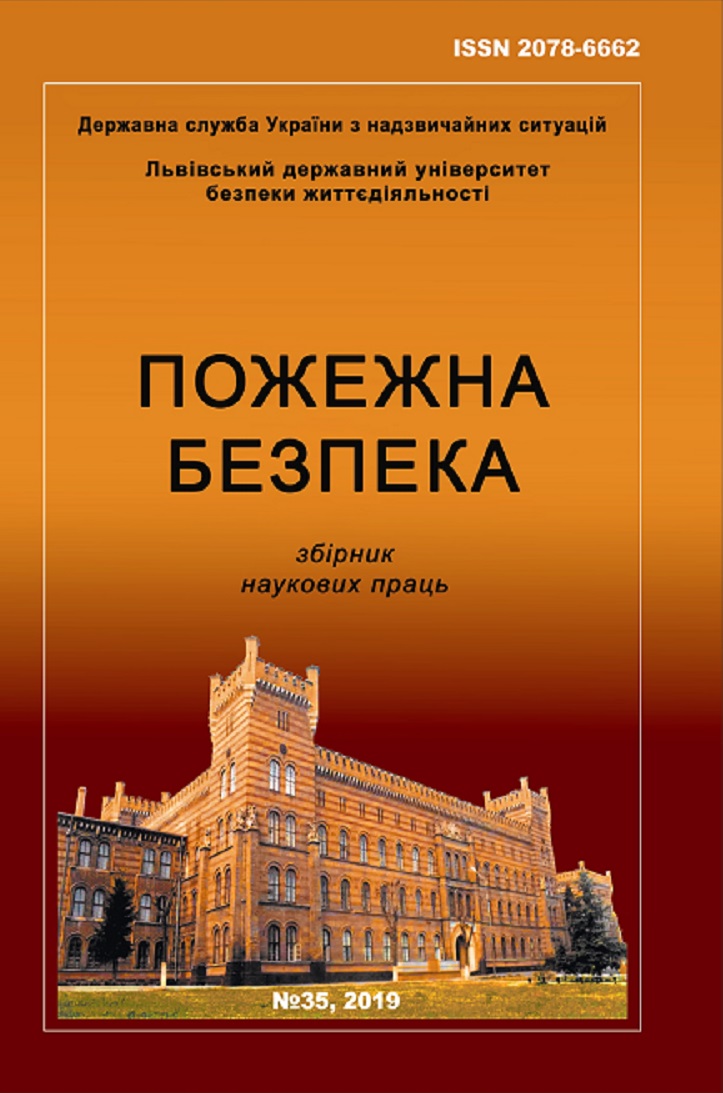ЗНИЖЕННЯ ПОЖЕЖНОЇ НЕБЕЗПЕКИ ТОРФ’ЯНИКІВ, ТОРФОРОЗРОБОК ТА СПОСОБИ І ПРОТИПОЖЕЖНЕ ОБЛАДНАННЯ ДЛЯ ПІДВИЩЕННЯ ЕФЕКТИВНОСТІ ЇХ ГАСІННЯ
Анотація
Як відомо, торф використовується для енергетичних та сільськогосподарських потреб упродовж тривалого часу у ряді країн світу. Згідно із статистичними даними Міжнародного торф’яного товариства (International Peat Society, IPS), світові запаси торфу становлять понад 400 млн га, з яких більше 305 млн га зараз розробляється. В Україні розвідано понад 2500 родовищ торфу із середньою глибиною залягання 1,4 м. З них близько 81% видобувного торфу використовують як паливо, а 19% – в сільськогосподарських цілях. Проте щорічно сотні тисяч кубометрів торф’яних родовищ нищаться пожежами. Статистика торф’яних пожеж у світі останнім часом залишається невтішною. Аналогічна ситуація спостерігається і в Україні. Торф’яні пожежі найчастіше виникають в місцях видобутку торфу, як правило, через неправильне поводження, від розрядів блискавки або самозаймання. Торф’яні пожежі часто охоплюють великі площі і важко піддаються гасінню, коли горить шар торфу значної товщини. Торф може горіти в усіх напрямках, незалежно від напрямку і сили вітру, а під ґрунтом він горить навіть під час помірного дощу і снігопаду.
Проаналізовано відомі методи запобігання пожежам в екосистемах торф-ліс та на цій основі запропоновано способи їх вдосконалення та розроблення нових.
Одним з найбільш дієвих засобів запобігання торф’яним пожежам є обмеження розповсюдження вогню завдяки викопаним ровам і широким канавам уздовж лісів. Ще однією можливістю убезпечитися від стихії може бути заводнення осушених торф’яників. Найдієвішим способом гасіння є обкопування території огороджувальними канавами. Їх копають до мінерального ґрунту або ґрунтових вод. Пожежа гаситься шляхом перекопування палаючого торфу і заливання його великою кількістю води. Моделювання огороджувальних канав з урахуванням вологості підстилки та торф’яників, вітру, температури навколишнього середовища дає змогу визначити їх оптимальні розміри та розташування для підвищення ефективності процесу гасіння.
Підвищення ефективності гасіння торф’яних пожеж завдяки вдосконаленню конструкції пожежного ствола дає змогу покращити подачу вогнегасних речовин в горючий шар під час гасіння пожеж на глибині від 2 до 7-ми метрів, гасіння здійснюється по всій глибині розміщення та забезпечує безпечні умови праці пожежників під час ліквідації глибинних пожеж.
Вдосконалення існуючих вогнегасних змочувальних розчинів та розробка нових, для підвищення ефективності гасіння на глибинах до 7-ми метрів з кращими вогнегасними та проникаючими властивостями.
Завантаження
Авторські права CC-BY








